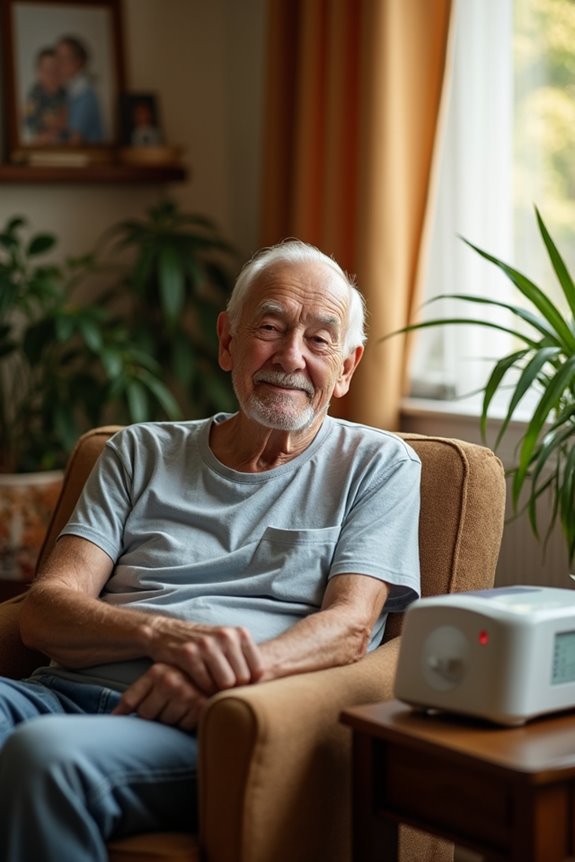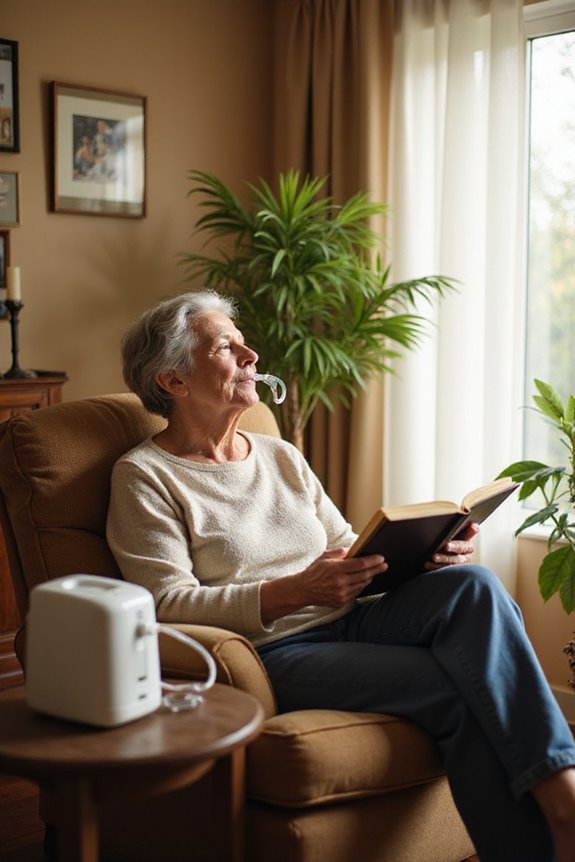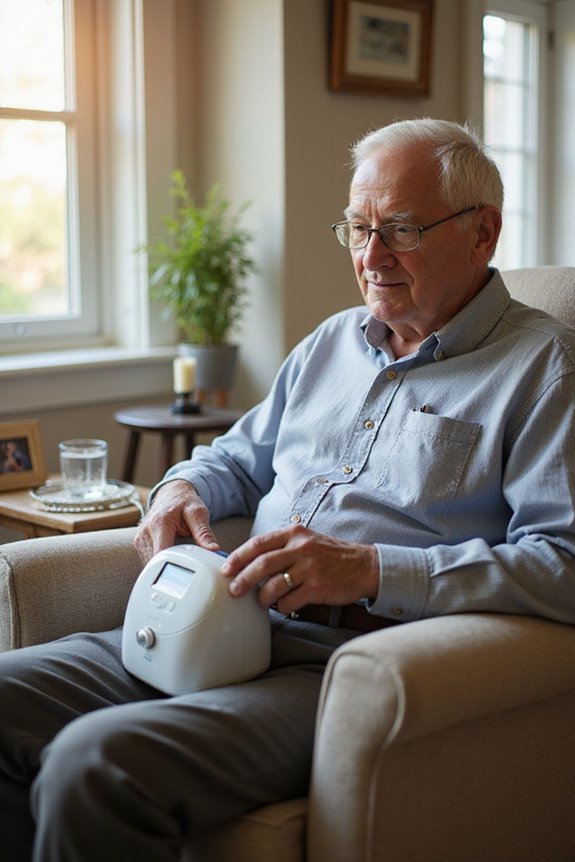Home ventilators support patients with respiratory issues from conditions like ALS, COPD, and obesity hypoventilation syndrome. Key components include one-way valves, air reservoirs, and control systems monitoring pressure and flow. Safety measures involve caregiver training, emergency kits, and regular maintenance, including inspections and filter replacements. The market for home ventilation is projected to grow considerably, with innovations in smart technology and energy-efficient systems. Understanding these elements enhances patient care and guarantees effective use of ventilators at home, leading to further insights on this crucial subject.
Key Takeaways
- Home ventilators support patients with respiratory muscle weakness or conditions like COPD and obesity hypoventilation syndrome.
- Caregivers must receive training on ventilator operation, emergency procedures, and daily monitoring of patient status.
- Routine maintenance includes inspections, cleaning, filter replacements, and annual technician evaluations to ensure proper functioning.
- Safety features like alarms, backup systems, and organized emergency kits are critical for effective home ventilation.
- Future trends in home ventilation include smart technology for remote monitoring and more energy-efficient systems for improved patient care.
What Conditions Require Home Ventilator Use?
What conditions necessitate the use of home ventilators? Various medical conditions lead to the requirement for home ventilator support, primarily:
- Neuromuscular Diseases: Conditions like amyotrophic lateral sclerosis (ALS) and muscular dystrophy cause progressive respiratory muscle weakness, impacting patient eligibility for both invasive and noninvasive ventilator types.
- Chronic Obstructive Pulmonary Disease (COPD): Advanced stages of COPD often require ventilator support during exacerbations.
- Obesity Hypoventilation Syndrome (OHS): Patients with OHS may need home ventilation when noninvasive methods fail.
- Pediatric and Congenital Conditions: Infants with congenital central hypoventilation syndrome often require lifelong ventilator support.
Each of these conditions highlights the critical need for tailored ventilator solutions to maintain adequate gas exchange and support daily living. Additionally, regular maintenance and replacement of ventilator accessories are essential to ensure optimal performance and reduce the risk of infection.
How Do Home Ventilators Function?
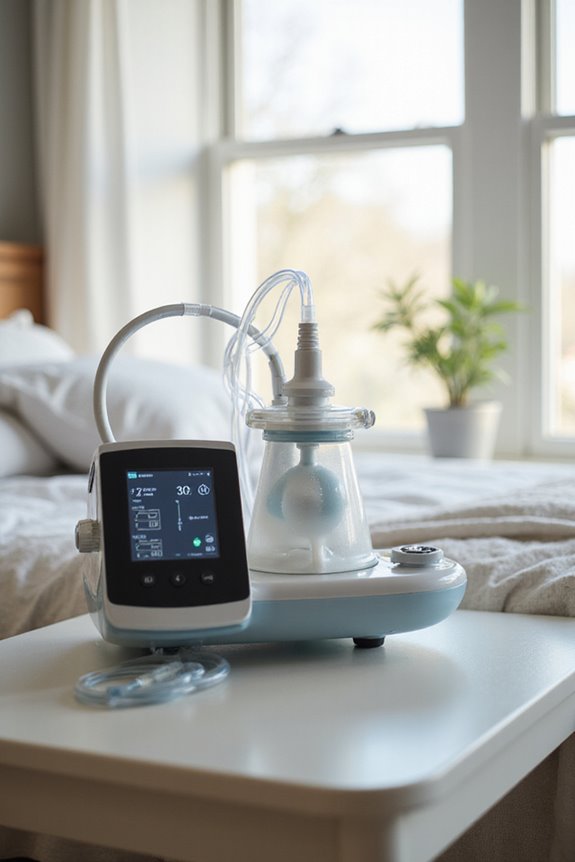
Valves and Tubes: One-way valves and patient circuits manage the direction and flow of air.
Home ventilators utilize ventilator mechanics to guarantee effective airflow management. A compressible air reservoir supplies air-oxygen mixtures, while drive mechanisms like mechanical fans create pressurized gas. Control systems, driven by microprocessors, precisely regulate pressure, volume, and flow, adapting to patient needs.
Ventilator modes, such as Assist Control and SIMV/CPAP, provide varying levels of support. Breath rate settings dictate the number of breaths per minute, while tidal volume control determines the air delivered per breath.
Monitoring features include alarms and backup systems, guaranteeing safety and continuous operation. Regular maintenance and user training are essential for peak functionality, promoting a safe environment for patients relying on home ventilators. Additionally, airflow capacity is a critical factor in ensuring adequate ventilation for various applications.
What Are the Safety Measures for Home Ventilator Use?
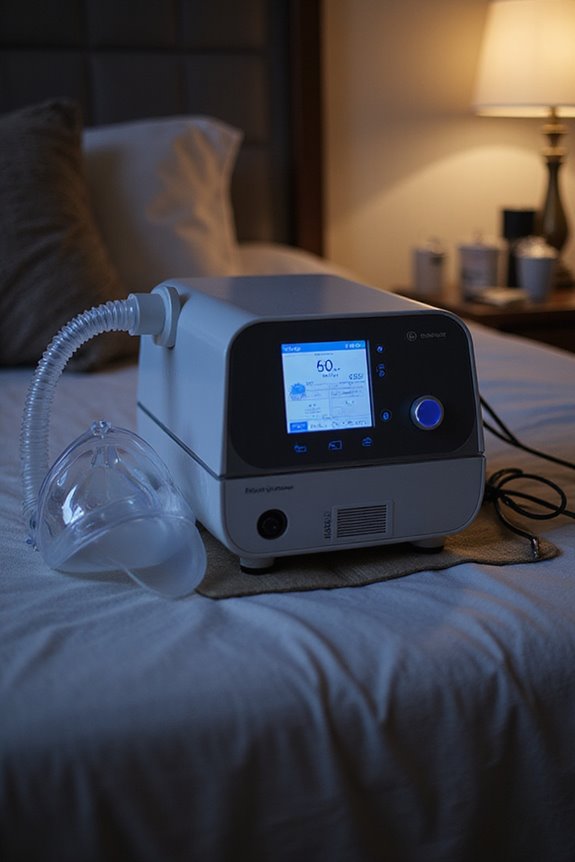
Guaranteeing safety during the use of home ventilators is paramount for patient well-being. To uphold safety protocols, several measures are essential:
- Equipment Reliability: Home ventilators must meet ISO standards, include internal batteries, and have a backup ventilator for extended use. Spare components, like reserve masks and cannulas, should be readily available.
- Emergency Preparedness: Caregivers must receive thorough training in ventilator operation and emergency procedures. An organized emergency kit with essential supplies enhances readiness.
- Environmental Safety: Assure reliable electrical supply and conduct annual HVAC inspections to maintain air quality. Use pleated filters and portable HEPA air cleaners to reduce airborne contaminants.
Consistent monitoring and adherence to these measures contribute to a safer home environment for ventilator-dependent patients.
How Can Caregivers Support Patients Using Home Ventilators?
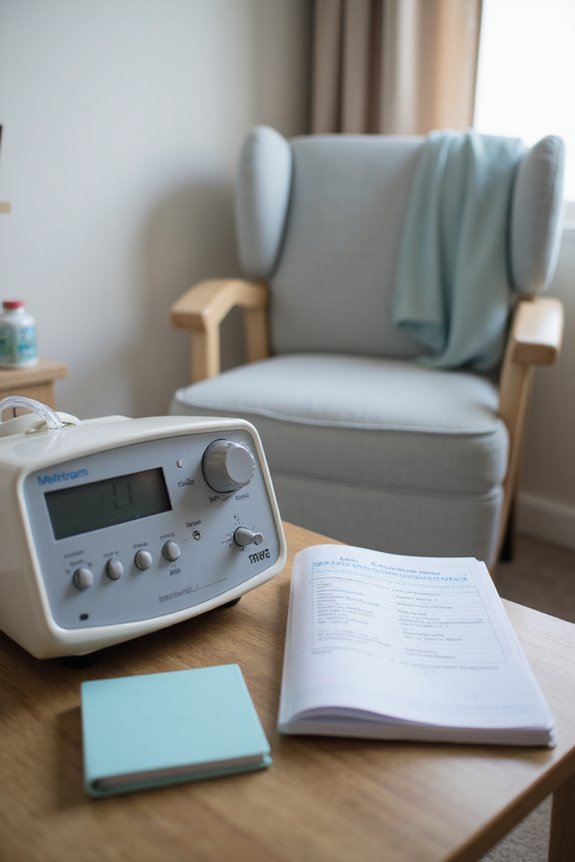
Caregivers play a significant role in supporting patients using home ventilators, ensuring both safety and comfort within the home environment. Effective caregiver training is essential, encompassing both written materials and hands-on instruction regarding respiratory needs and emergency management skills.
- Daily monitoring of ventilator settings and patient status is vital for maintaining stability.
- Establishing direct communication with healthcare professionals facilitates timely care adjustments.
- Caregivers should receive emotional support and resources to prevent isolation, especially during the stressful initial weeks post-discharge.
Additionally, ongoing assessments and scheduled follow-ups enhance caregiver confidence and skill retention. The incorporation of Basic Life Support (BLS) training equips caregivers to effectively respond to emergencies, ultimately securing patient well-being.
What Maintenance Is Needed for Home Ventilators?
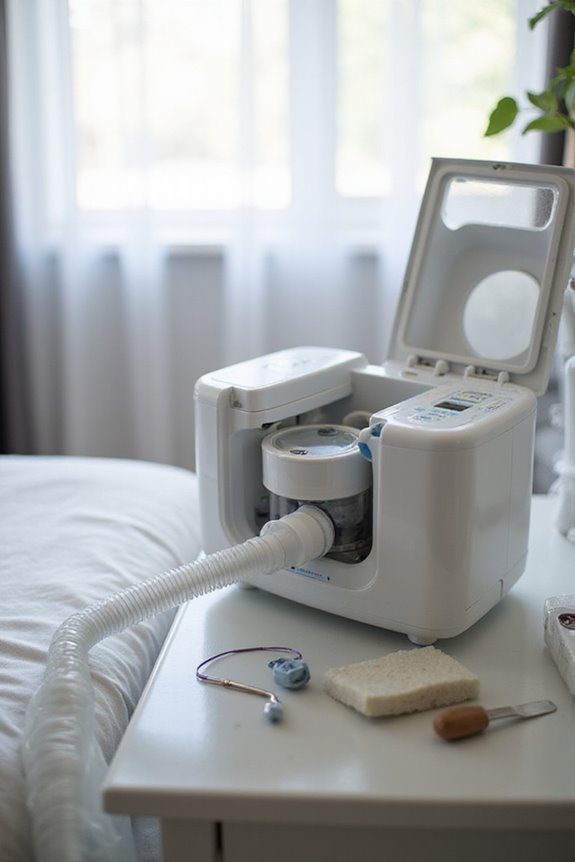
Regular maintenance of home ventilators is essential for guaranteeing ideal performance and patient safety. This includes conducting routine inspections to identify physical damages, testing alarms, and monitoring air pressure.
Cleaning Protocols:
- Clean removable parts with warm water and mild soap.
- Sanitize the exterior with recommended disinfectants.
Component Replacements:
- Replace filters every 3 to 6 months.
- Change circuits and suction catheters as needed.
Performance Testing:
- Run self-tests and calibrate oxygen sensors daily.
- Verify battery status and safety features regularly.
Professional Servicing:
- Schedule annual inspections by qualified technicians.
- Maintain logs of all maintenance activities.
Adhering to these guidelines guarantees peak functionality and enhances patient safety in home ventilator use.
What Are the Future Trends in Home Ventilation?
The evolution of home ventilators is poised for significant advancements, reflecting broader trends in the home ventilation market. Key future trends include:
- Market Growth: The home ventilation market is projected to reach $50.3 billion by 2032, achieving a 7.3% CAGR.
- Smart Technology Integration: Ventilation systems will increasingly connect with smart home ecosystems, allowing remote monitoring and data-driven optimization of air quality.
- Energy Efficiency: Advanced systems, such as heat recovery ventilators (HRV) and energy recovery ventilators (ERV), promise 50–90% lower energy consumption.
- Regulatory Drivers: Stricter building codes and increased focus on indoor air quality (IAQ) standards will shape future product offerings.
- Innovative Designs: Smaller, quieter, and ductless systems will enhance user convenience and installation efficiency.
Frequently Asked Questions
How Do I Choose the Right Mask for My Ventilator?
Choosing the right mask for a ventilator involves understanding various mask types and conducting a thorough fit assessment. Comfort and effectiveness are enhanced by selecting a mask that aligns closely with individual facial contours and breathing needs.
Can I Travel With My Home Ventilator?
Travel considerations for a home ventilator include ensuring proper ventilator maintenance, packing essential supplies, verifying power compatibility, and informing travel companions. Thoughtful preparation fosters a sense of security and belonging while journeying beyond familiar surroundings.
What Should I Do During a Power Outage?
During a power outage, individuals should activate backup power systems and follow emergency plans. Monitoring battery levels and adjusting ventilator settings can extend usage, while communication with healthcare providers guarantees coordinated assistance for continuous support.
How Can I Manage Discomfort From Ventilator Use?
Like a gentle breeze soothing a weary traveler, managing ventilator comfort involves using effective breathing techniques, regular communication among caregivers, and emotional support to alleviate discomfort, ensuring a harmonious environment for both patients and their families.
Are There Any Dietary Restrictions for Ventilator-Dependent Patients?
Ventilator-dependent patients should prioritize balanced nutrition to meet their nutritional needs while avoiding overfeeding. Hydration tips include monitoring fluid intake carefully, ensuring adequate electrolyte balance, and considering enteral support for ideal recovery and respiratory function.

